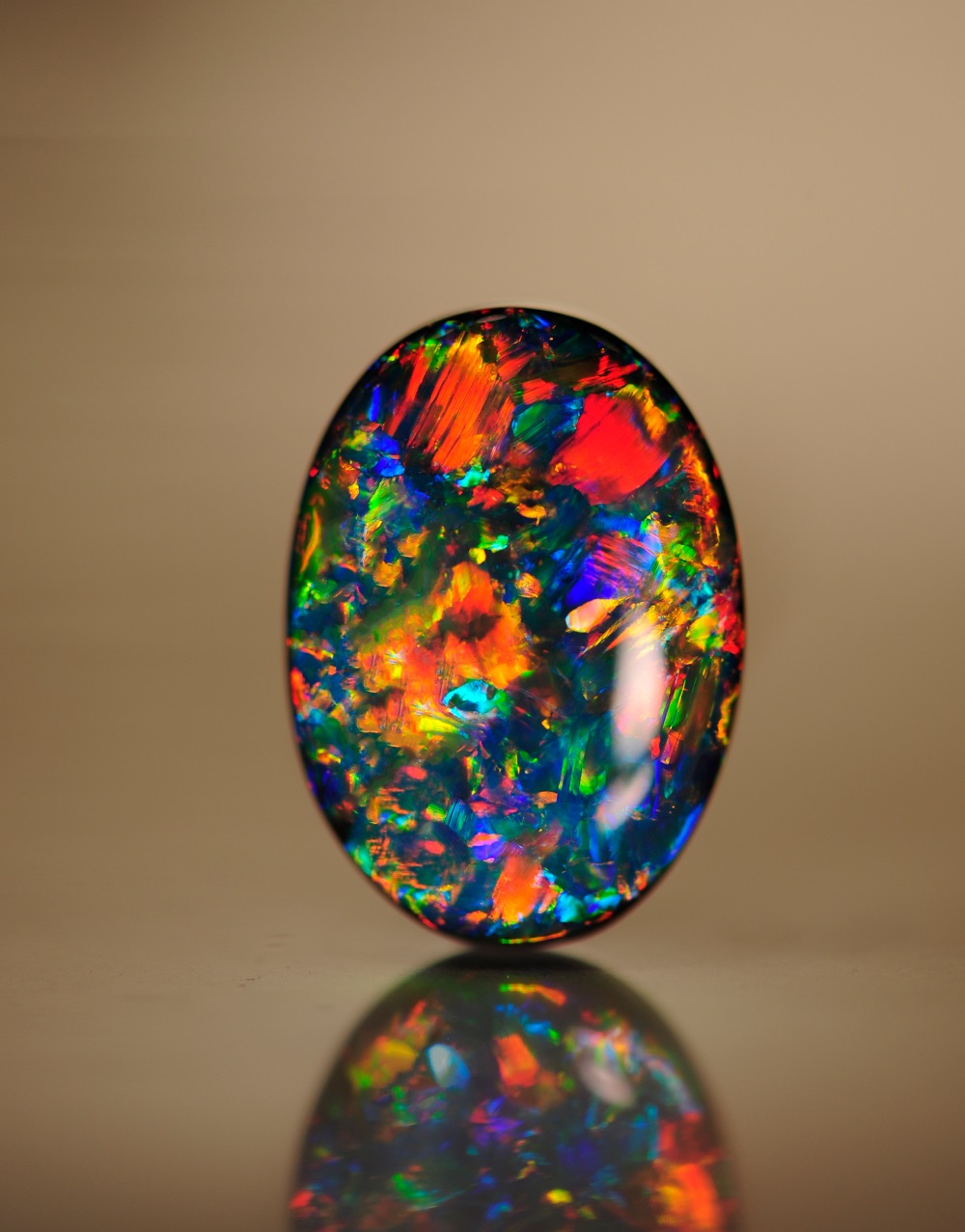What do we know about Earth's rarest minerals?
Gemstones and minerals are amazing natural creations, some of which take millions of years to form. Some of them can easily be found, like the silica minerals, for example. However, there are some crystals of which only single specimens have been found, or whose reserves are so scarce that they have been classified as rare.
Check out some of Earth's rarest minerals:
Poudretteite
This light pink crystal was found for the first time during the 1960s in Quebec, Canada. It was named after the Poudrette family who were the owners of the quarry, where this mineral had been discovered. However, it wasn't until 1986 that it was internationally classified as a new specimen.
photo: Wikipedia
Black Opal
There are many white, gray and green opals around the world, but the black one is quite rarely found. The most valuable specimen was found in New South Wales, Australia in 1983, weighing 180 carats and the price went near AUD 800,000 in 2005. In spite of its name, this mineral exhibits not only black, but also brown, green and deep blue colors. One very popular opal type is the so-called "Fire Opal" and we have included it in our article Top 10 of The Most Beautiful Minerals You Have Ever Seen! Click the link to learn more. photo: Gem-A
Tanzanite
Discovered in 1976, this stone can only be found in Northern Tanzania and has deep blue and violet colors when heated. Its natural color is brownish-red but the most expensive one is the genuine blue tanzanite that has not been thermally processed. This kind of stone can often be compared to blue sapphire.
photo: Weinrich Minerals
Benitoite
Benitoite is a blue mineral that was discovered in the beginning of the 20th century. At first, geologists thought benitoite was part of the corundum mineral group because of its sapphire-like blue color. After new research however, it was found out that benitoite has nothing to do with the famous blue stone. With a hardness of only 6-6.5 Mohs, benitoite is a relatively soft stone, making it unsuitable for jewelry making purposes. Its name comes from the San Benito river area, where it was first discovered. Quality benitoite has only been found in California and that's why it was deemed the state's official mineral in 1985. Benitoite has also been found in Japan, Australia and Arkansas in small qualities.
photo: Healing Crystals Co.
Red Beryl
Beryl's varieties – the infamous emerald, as well as morganite are very rare on their own, however the red one is extremely rare to come across. This type of beryl has only ever been found in Utah and the state of New Mexico. Of course, its deep red color is what makes it so desired and sought after. The stone itself forms as aluminum atoms transform into manganese ones. This extremely rare mineral has a price as a 40-carat diamond. Unlike the latter, however, the largest red beryl ever found weighs only 8 carats.
photo: www.irocks.com
Jadeite
Despite its scant quantities, the most valuable species of this stone are the green colored ones with a touch of transparency. During the late 1990s Christie's held an auction where a jadeite necklace was sold for nearly 10 million US dollars.
photo: www.le-comptoir-geologique.com
Taaffeite
Named after the Irish mineralogist Richard Taaffe, who discovered it, Taaffeite is one quite rarely found stone. Truth is, only a handful of this mineral has ever been found, which makes it a highly valuable collector's stone.
photo: www.GemRockAuctions.com
Grandidierite
Just like its hard-to-pronounce name, Grandidierite is also very difficult to find. It was first discovered in 1902 in the southern parts of Madagascar and similarly to Tanzanite, it has pleochromic qualities. This means that it can change its color to blue, green and white and because of this, Grandidierite is sometimes confused with another stone – Serendibite.
photo: Rob Lavinsky, iRocks.com
Kyawthuite
The second position in our ranking is for this mineral with an unusual name. As far as scientists know, only one specimen has ever been found. It was discovered in the Mogok region in Myanmar and the Caltech mineral database describes it as a small (1.6-carat) deep orange stone which was recognized officially by the International Mineralogical Association in 2015.
photo: www.Mindat.org
Painite
First in our ranking is Painite, which, according to many (including Guiness' World Record Book) is the rarest mineral on Earth. We know of the existence of only two crystal specimens. This mineral contains aluminum, calcium, boron, zirconium and oxygen.
photo: BC Gold Adventures
You've reached the end of this article.


